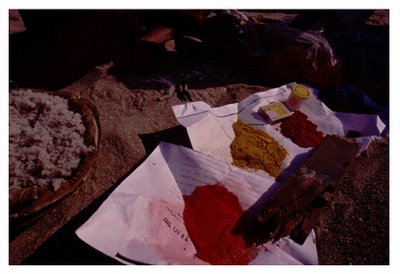
There are two things you should know about French Guiane. First of all it’s flat, and secondly, everyone is spaced out. No, I’m not talking about drug culture in this tiny, piece of France in South America. It didn’t even cross my mind, honestly, despite the fact that I am writing this piece from Colombia, where in actual fact, many people really are, spaced out.
No, French Guiane is a peaceful place. So laid back in fact, that thousands of French military personnel are based there to look after this tiny outpost of French civility in the Amazonian outback. Here you have all the amenities of France, because in actual fact, you are in France. Image that. Traveling 8000 miles southwest of Paris, across North Africa, over the Atlantic ocean, to finally land in South America and find that you can walk into any shop, or the local Carrefour and place a phone call, and someone will pick up the receiver on the other end and respond to your heavy breathing with a cordial ‘Bonjour’ or a grunting
mierde in French, back in the land of ‘Metropole’. It took me several weeks in Cayenne, the provincial capital of French Guiane to understand, that Metropole is the term used by locals when referring to the center of their universe ‘Metropolitan’ Paris.
As I don’t have any friends currently living in the ‘City of light’ or Metropole, I couldn’t find any excuse to try this out, but I decided to take a look at the local yellow pages back in my dimly lit
lit - hotel room - at the Hotel Amazonia to see what interesting things I could find. And
voila! it was true. I had the Paris telephone Directory in its abridged ‘outback’ version on my wooden night table, inviting me to carouse its advertisements for fine lingerie, as yet another torrential downpour slashed its way through this city of painted wood siding and weathered tin roofs.
Now, French Guiane does not leave you many choices on a rainy day. You can while away your time, looking for the nearest Peugeot dealership in Paris, thanks to the enlightened phone book or switch on the local television channel and watch - Space TV.
Therefore, when I mean everyone is spaced out, in French Guiane, it is because the country is addicted to Space. Essentially the entire territory belongs to the European Space Agency, the ESA, and the other half belongs to the French Foreign Legion with its regimental battalions scattered throughout the rainforest, training to overthrow corrupt, African regimes.
And you have to be very much out of luck to miss a rocket launch when visiting French Guiane. It is the country’s main tourist attraction and source of income. Like football in Brazil, when a rocket blasts off into space from the Guiane, everyone is there to cheer it on.
So, I decided to head over to Kourou, the hub of the ESA/Arianespace, space programme in this overseas province and buy tickets for Thursday’s launch. In my rented silver Citroen, I drove down a beautifully paved highway towards Kourou and the Surinamese border. I could have been cruising the Autoroute from Metropole to Lyon, except for the snake-infested grasslands on either side of the road.
I didn’t need my Michelin map to realize that I had landed in an alien territory, after the two hour journey, when satelite dishes started sprouting up like mushrooms across the landscape and I found myself pulling into a sprawling car park, only Wall-Mart users could appreciate. I had arrived at the ESA Space center and Museum, with an Ariane 4 rocket pointing towards the heavens, at the gate. I toured the air-conditioned museum, with pictures of space and its surrounding galaxies, and watched several hours of videos dedicated to the adventures in ‘L’espace’ of the Arianespace rocket programme. The jewel in France’s technological crown.
Kourou is a seaside resort with few tourists. It’s shark-infested waters were a deterrent to the prisoners who for centuries perished in one of the most notorious penal colonies on the Ile Royale, a small archipelago of islands scattered several miles off shore and home to convicts, such as Henri Carriere, author of the best selling novel, Papillon, who was banished to these windswept islands from the Metropole. Carriere made a daring escape from Devils’ island - as described in his book- bypassed Kourou to a life of freedom in Venezuela. Alfred Dreyfuss, the esteemed nineteenth century French General who was accused of treason and framed for being Jewish, met his end on the islands near Kourou, in solitary confinement. His legacy is a small stone hut, where he spent his final days writing letters home and staring at the star studded sky.
So stargazing has been a pastime in French Guiana for centuries. It’s formidable weather and wind patterns; make this territory ideal for rocket scientists and aerospace engineers to try out their latest gadgets. The Hotel Cosmos or the ‘Auberge du Galaxy’ where I was staying for the much anticipated launch of ‘Spot 4’ was a small corner of France exiled to the new world. ‘Punctualite’ was rewarded at meals with bottles of vintage Cote du Rhone and a generous portion of steak aux frites (steak and fries). Guests were guaranteed 24-hour live feed of Space TV, with its grainy images of ‘real time’ satellite assembly operations inside the ESA. Images so static that Space Tv must be France’s secret weapon in psychological warfare, and the modern day equivalent of life in solitary confinement.
As dusk arrived, it was time to get the show on the road and see ‘Spot’ fly. We boarded air-conditioned buses and were once again put through another episode of the award winning ESA - Space Tv programming, with a special feature on ‘non-geostationary satellites’. Spot 4, was one of those. A multi- million dollar satellite that would photograph every corner of the world and send the images back home - to Google. Thanks to Spot 4 –if he hasn’t burned out by now on his non-geostationary path- we can map our favorite restaurants and landmarks in cyberspace.
After half an hour on the tour bus, we disembarked in a clearing of shrub, deep in the Amazon. Fireflies glowed in the dark as we fumbled for our plastic chairs, under the night sky, avoiding stepping on snakes and being mauled by howling monkeys, howling nearby. We were set for ‘lift-off’.
Then came the music. French of course. Jean Michel Jarre’s epic, electronic new age ensemble blasted from towers erected in the distance. ‘Spot 4’ was leaving us to the rhythm of
Oxygene. Then a deep voice emanated from the jungle and the monkeys stopped howling.
“Good evening ladies and gentlemen’ began the slow drone of a voice. ‘In a few minutes from now you will witness lift-off of our Ariane 4 rocket with spot mapping satellite technology. Welcome to flight 107’. I felt I had stepped into ‘Contact' meets 'Apocalypse Now’ .
The crowd was transfixed by a glowing speck of light on the horizon, when all of a sudden a giant-sized movie screen lit up in the distance, to give us a closer view of Araine rocket's final seconds on earth. We were twenty miles away, and until then, Ariane and the fireflies were the same thing.
Then the man with a voice like Charles Aznavour, began the final count.
Trois. (three),
Deux (two),
Un (one)….silence everyone… DECOLLLLAGGEEEEE!. Ariane had lift off. A streak of light raced up into the night sky, passing over Dreyfuss’ cottage, Casablanca, Milan and Moscow. In less than it took Mr. Aznavour to say the word ‘decollage’, Spot had left our lives and was busy snapping away. The Google money-counting machine had begun, and I was still stranded out, in the middle of this space country.
 Darjeeling, India. The gateway to the Himalayas. The roof of the world.
Darjeeling, India. The gateway to the Himalayas. The roof of the world.

















